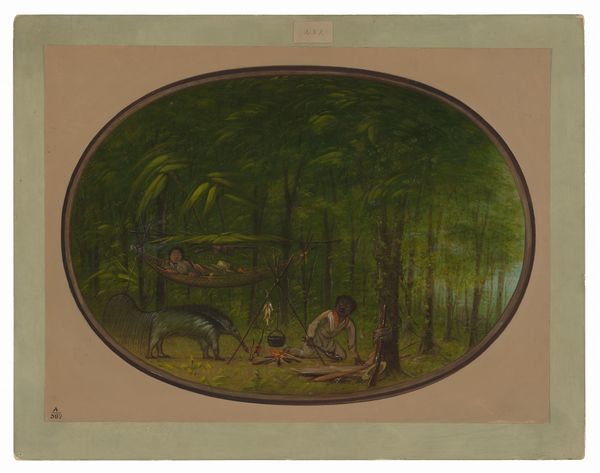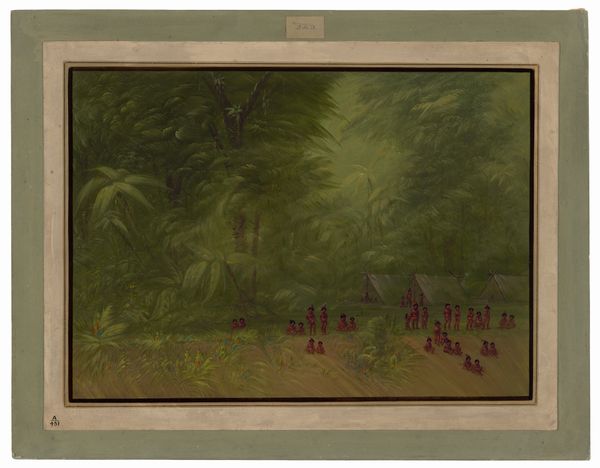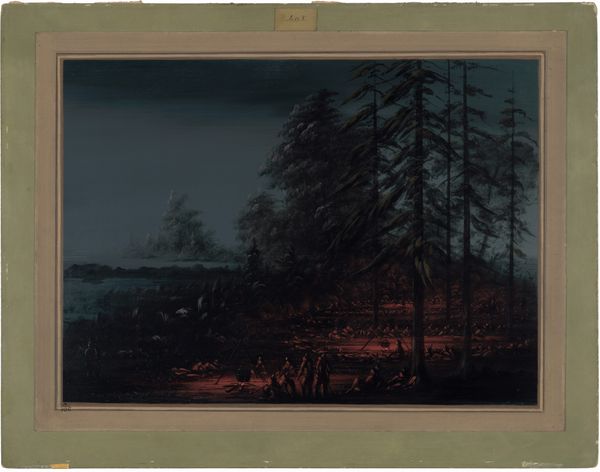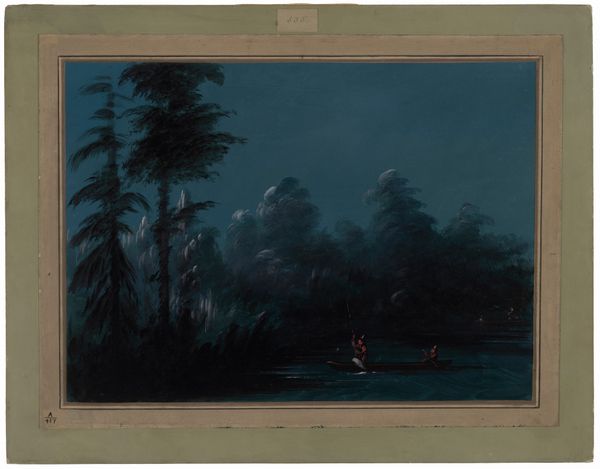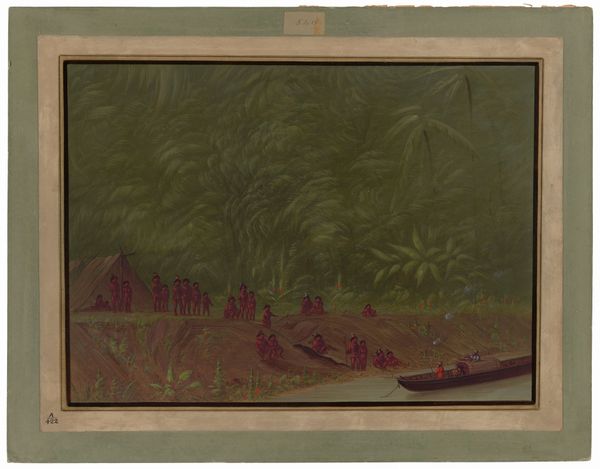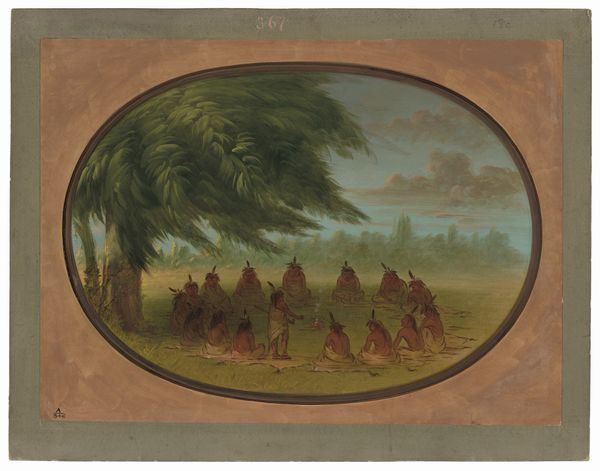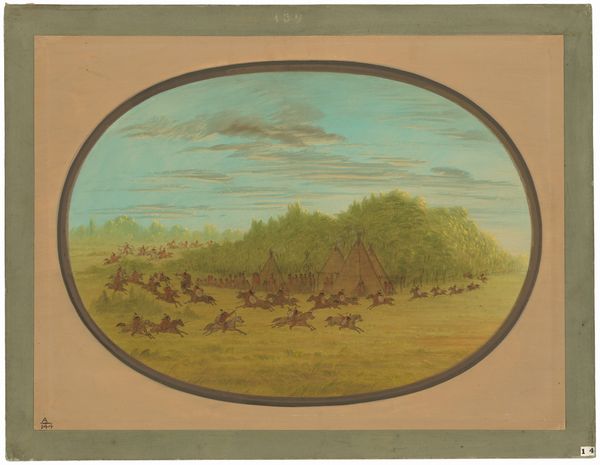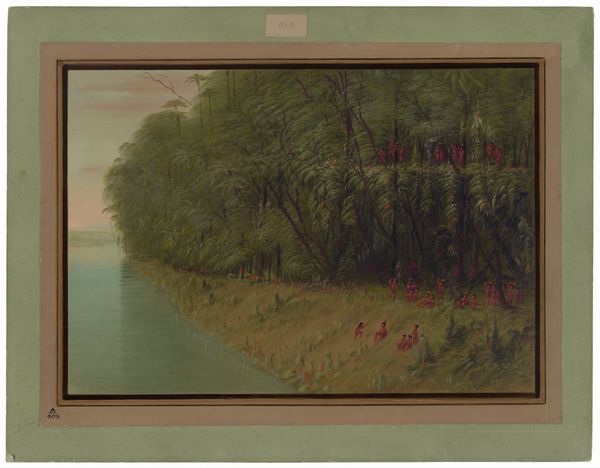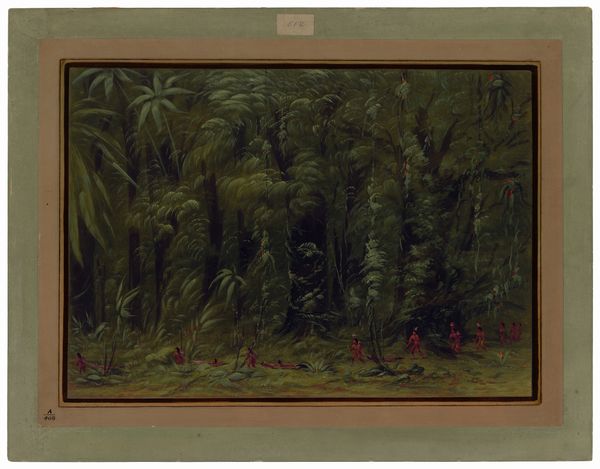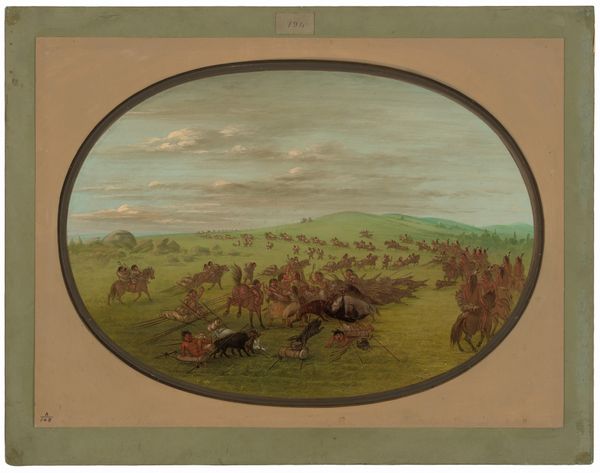
#
water colours
#
narrative-art
#
landscape
#
underpainting
#
watercolor
Dimensions: overall: 46.5 x 61.7 cm (18 5/16 x 24 5/16 in.)
Copyright: National Gallery of Art: CC0 1.0
Curator: Here we have George Catlin's watercolor work, "Excavating a Canoe - Nayas Indians," created between 1855 and 1869. The underpainting really allows the figures and landscape to meld into each other. Editor: The scene feels grounded, doesn't it? Almost literally, with the exposed roots of those massive trees serving as a backdrop for this incredibly detailed snapshot of labor. Curator: Absolutely. It gives us insight into the Nayas people and their methods. It speaks to identity, but also to the social contexts that form and inform the Nayas community’s interaction with materials and tools, right? It represents intersectional narratives focused on gender, race and indigenous politics. Editor: True, though Catlin’s choice of watercolors – a medium easily transported and quick to use – feels quite intentional for this ethnographic work. Think about the efficiency of documenting processes quickly in situ. I wonder what Catlin knew of Indigenous methods for fashioning canoes and how he situated that knowledge? Curator: It definitely seems there's a degree of romanticism in his portrayal. Look at the poses – almost idyllic in nature. Do you think it hints at the colonial gaze that so frequently informs ethnographic depictions? I wonder if this depiction flattens and homogenizes the indigenous community he’s showing us. Editor: The flattening might be at the material level, too, in the way watercolor can blend elements, abstracting a bit from the textures present, and potentially altering our understanding of the actual process and craft. It would be interesting to examine this alongside firsthand accounts by Indigenous communities from the period, maybe analyze those accounts as artistic mediums in themselves? Curator: That approach would contextualize Catlin's painting more deeply, giving it the cultural studies treatment, connecting art history and feminist theory for a deeper understanding of the social frameworks at play. It could really enrich what we know of Nayas culture during that period. Editor: For me, analyzing this image through materiality shows a dedication to recording a process of labor. I am struck by the way it links consumption, use of materials and tools with their societal context in ways that tell the rich story of production and Indigenous life at the time. Curator: And when we add to it an awareness of intersectional representation, considering whose narrative this truly is, it enriches the story that the painting—or perhaps I should say, this record—is telling. Editor: Yes, and ultimately encourages reflection and debate about material processes in conjunction with representation, for a truly deep investigation.
Comments
No comments
Be the first to comment and join the conversation on the ultimate creative platform.

